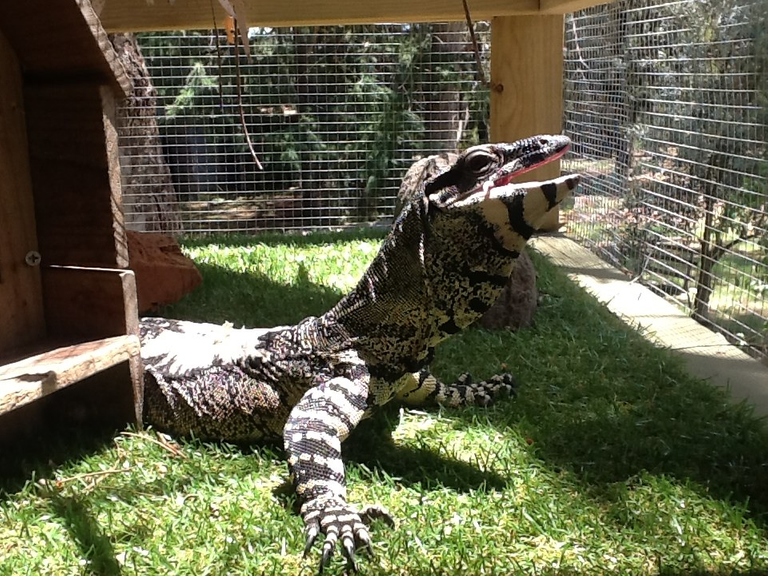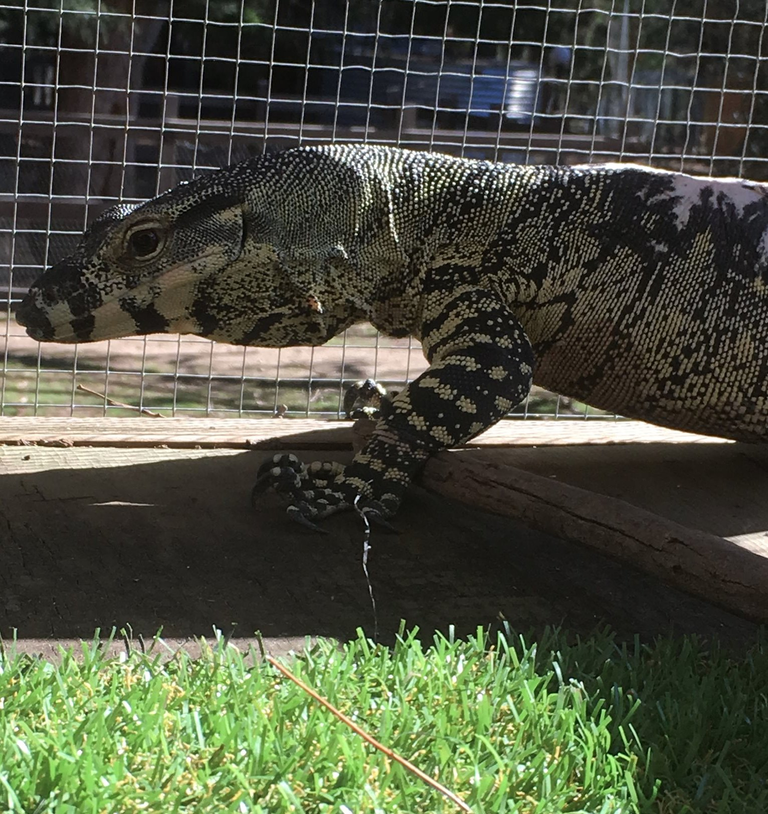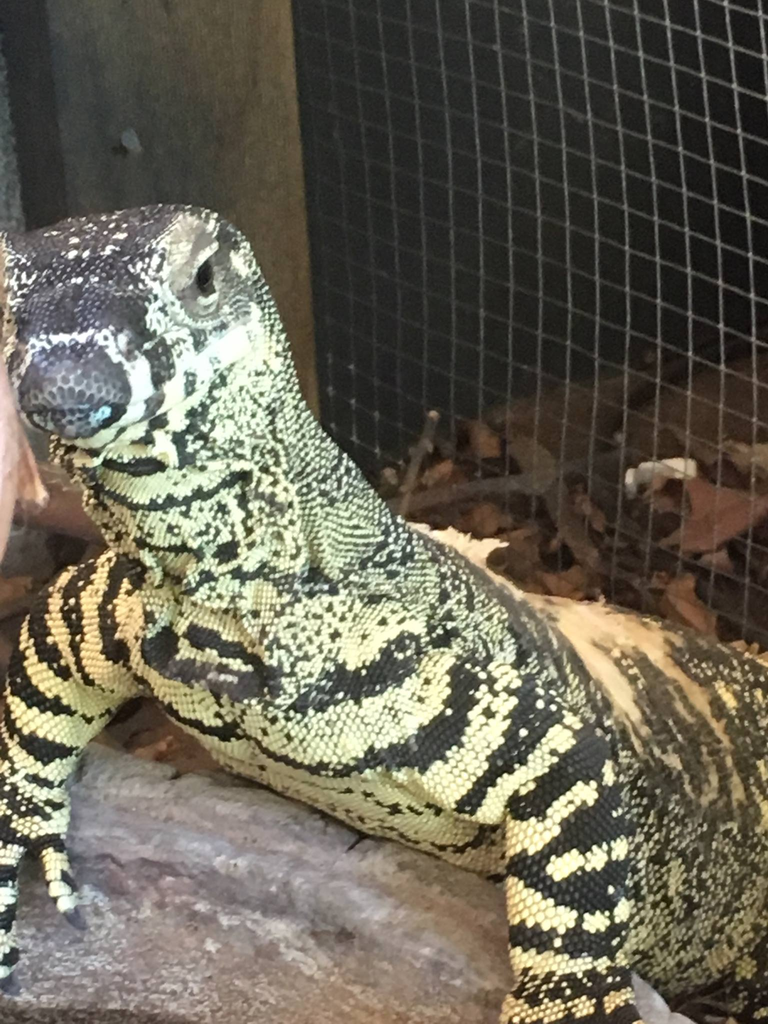Lenny is a lace monitor that came to us long ago after being injured at his old home. A large heat light fell off the roof of his enclosure and landed on him burning his back terribly and leaving an enormous scar. Whilst it doesn't bother him anymore it still looks quite painful.
Reptiles don't seem to feel pain the same as us and after the light fell he didn't move or react in the way we would, he just sort of let it burn him so the damage was quite extensive. this is why it is important to always have your heat lights or heat sources well fixed and in the case of climbing animals or ones that are able to get near the bulb, install a cage around the light. It is a very common injury in snakes who's heat source doesn't have a cage or barrier, some of the ceramic lamps can reach in excess of 300 degrees Celsius surface temp so even a very short exposure to them can cause damage.

Check out that long tongue
Lace Monitors.
The lace monitor is the second largest of the Australian monitor lizards after the Perentie and can reach lengths of up to 2m or 7 ft. They are the most well-known or commonly seen monitor in Australia. Often called a Goanna this term is generally used to refer to any monitor of a decent size. "Laceys" as they are affectionately known, are also one of the more common monitors in captivity. Whilst they reach a fairly large size and have big strong claws, those raised in captivity are often fairly docile. Most people avoid handling them often and just leave them be unless necessary.

You can see the scar on Lennys back here
Found all up and down the East coast these monitors are incredibly good climbers using their powerful claws, they can often be found sitting in trees and if provoked will often run up the nearest tree to escape. They are often seen around campsites and the last place me and Lydia went had 2 in the one camp which was kind of cool. Whilst they can often be seen close to humans you should avoid touching a wild one, their claws are enormous and sharp and will slice you like nothing and the teeth are designed for ripping apart flesh. Recently it was discovered that they have a fairly weak venom. Previously it was just thought that their carrion diet and un-hygienic mouths caused infection from bacteria but studies have found they do indeed have a venom. (though it does little to humans in most cases)
Fun fact, the Lace Monitor is the closest living relative to the Komodo Dragon.
As I mentioned they are carrion eaters which means they eat already dead animals, generally the decaying corpses of mammals. That being said they are still capable hunters and can move surprisingly fast. In the wild they will kill and eat mammals, birds and other reptiles. They themselves are hunted by Dingoes and feral dogs, cats and birds of prey. The introduction of cane toads also saw a reduction in numbers but monitors that were poisoned quickly learnt not to eat them again.
In my area they are fairly common but not abundant, they have been known to sneak into chicken coops and eat chickens or their eggs, as well as scavenge from bins. They are probably more often seen as road kill by most people and like all reptiles can be attracted to the dark roads as they heat up faster or just want to cross the road. There is a known one living at the caravan park nearby but he is fairly elusive and only spotted a couple of times a year.

Lenny!
Lenny is our lace monitor and came to us as a rescue. We have no idea how old he is or anything else but he is fairly tame. He spends most of his days basking in the sun in his enclosure, either hanging onto the side or clinging to a branch. Lenny has a large scar on his back from a burn he sustained while in previous care. It is fully healed but looks a little off-putting to some. While reptiles seem to not have an instant response to pain like us they also have a slower healing process and injuries can take months or years to heal. Often there will always be evidence of said injury but they are very resilient creatures and can keep going even after you think they might not.

Lenny doesn't get handled often and doesn't particularly like being touched. He will let you stroke his tail and lower back but is just as likely to move away. He has only bitten once and it wasn't bad, probably hunger or defensive. Not all lace monitors will grow to be 2m and Lenny may well be his full size, he will probably continue to put on weight all his life. Most reptiles seem to reach a certain length and then just bulk up as they age.

One day I would love to get one from young and raise it to be friendly and able to handle, they are interesting lizards and one of my favourite. It's also a dream to go and see Komodo Dragons and while I did see some in a wildlife park here they weren't the monsters you see on documentaries and TV.